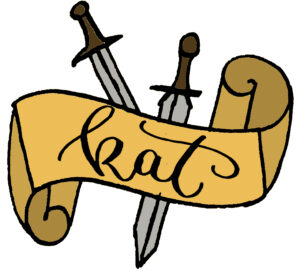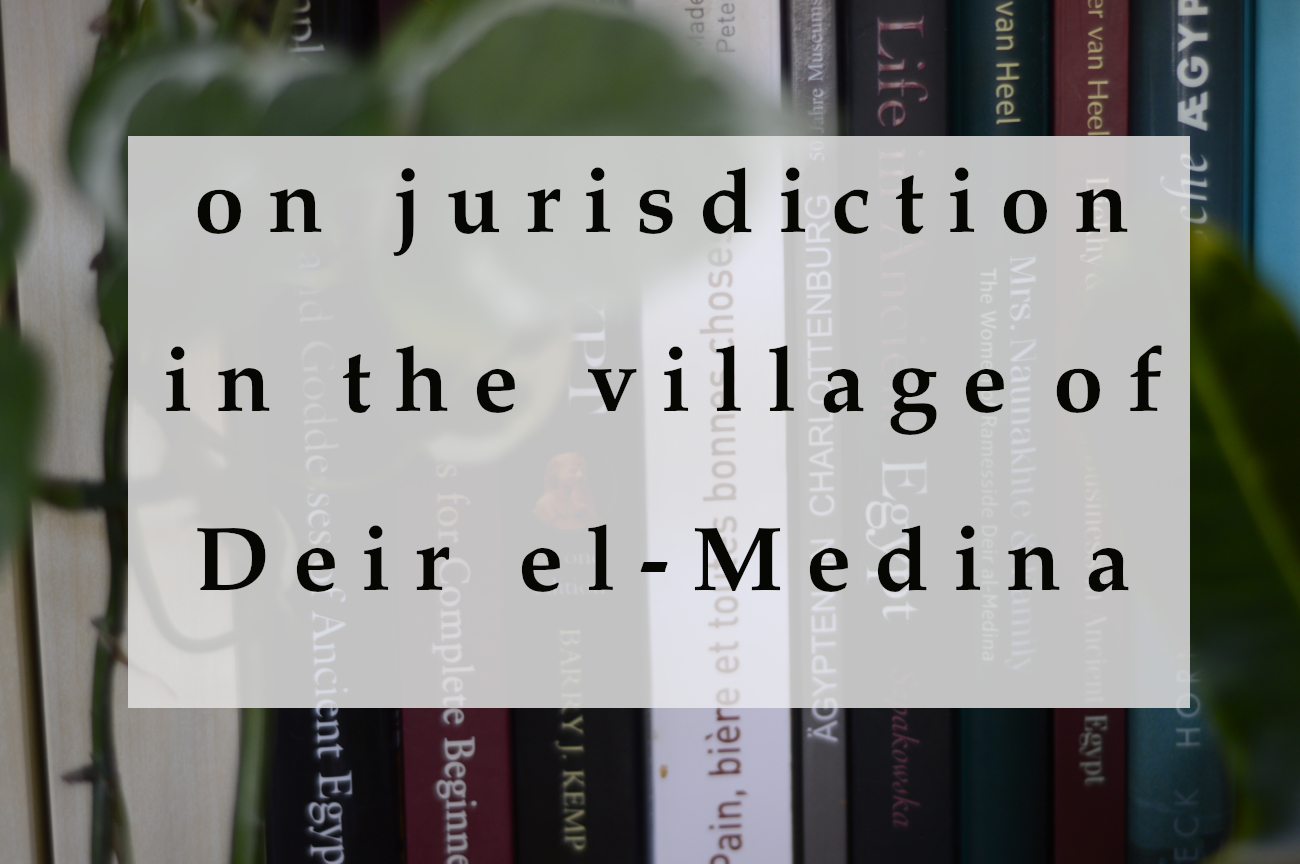Hoohoo, guys!
After deleting most (all?) of my posts about ancient Egypt because I didn’t like them anymore, I want to start all over again. I did a little Q&A on Instagram a few weeks ago on the topic of jurisdiction in Deir el-Medina (DeM) and I originally planned to make stories with more info on it, too. But frankly, it’s a lot and I hate writing things on my phone, so here we are. I’m writing a post on ancient Egypt again, yay!
You might wonder, why I picked jurisdiction, and not like, a general topic. For one, I did a presentation on this for uni, and then I also write my MA thesis on a related topic. After 6 years at uni I finally understood that not only weaponry and warfare is my jam… but also jurisdiction. I love it and I could talk about court cases without end. Why Deir el-Medina, though?
I should probably explain what Deir el-Medina is. Or was. You’ve probably heard about the Kings’ Valley and the Valley of the Queens. It’s where the rich monarchs and some of their family were buried for a period of time. Those tombs are cut out of the mountain and have several decorated chambers. Well, someone had to build these tombs. And those builders had to live somewhere. Voilà, the village of Deir el-Medina was founded. It was only the workmen and their families living there, nobody else was allowed to enter. Those people hiked over the mountain to their place of work where they cut the stone, painted on the walls, brought the offerings,… basically, the village was there to house the workers. It is one of the best documented places in Egypt. Because there were normal people, for once not the elite, living and working there and writing a lot of stuff down. School texts, administrative texts, courtcases, supply lists, letters,… there’s basically everything.
And because both my MA and the presentation I did were on Deir el-Medina, I decided to write about that here as well. I’ll probably broaden all that someday, but since I don’t really have access to a library right now, that has to wait. Just keep in mind that everything I say here is for a very specific village in the south of Egypt. And please be aware that this is only a small aspect. I’m only talking about the court here, there is much more to jurisdiction in Deir el-Medina!
Just another thing to know before reading the rest: an ostracon is a shard of clay or limestone that has been written on.
How did jursidiction in Deir el-Medina work?
This is a quick overview.
There were three main institutions that had a say over law and order in the village. There was the local court, the vizier’s office and the oracle. A vizier is basically the king’s vice. The king can’t be everywhere all the time, so he appoints someone to do his job in his stead. An oracle is a deity you can ask for help or answers or verdicts.
In some instances, cases had to go before other courts in the area of DeM, smaller ones or the big one in Thebes, that was just across the river Nile. The hierarchy of judicial instances was as follows:
- the king
- central courts (called qnb.t aA) in Thebes for the South and Memphis for the North, they are led by hereditary princes and high officials
- the vizier and his office
- the locals courts
- the sr.w, a council of elders
![]()
The local court
The Egyptian word for that was qnb.t. Since nowadays we do not have an equivalent for this, there is no translation that fits 100%. Since it has many different duties, “council”, “administration”, and “court” do all fit. In this context though, I shall speak of court.
The judges are called sr.w which comes from the Egyptian word for an elder person. The words qnb.t and sr.w are used interchangeably in the sources from DeM. The exact name of the court was probably qnb.t . sDm.wj (“court of the hearing”) which describes exactly what the court does.
The local court was in charge of all the cases in Deir el-Medina that were internal. If it was a matter of state (e.g. big crime) or someone from outside of DeM war involved (e.g. trader), the cases came before other courts.
![]()
Who was on the local qnb.t?
I already told you that the court was for internal matters only. So of course there were almost only people from the inside of the village. Plus sometimes outside officials, like the scribe of the vizier or the vizier himself. The number of judges could change from day to day between any number between 5-14. Sometimes, there was even only one judge who acted as what we could call a notary, for example in cases where someone wanted to put down their will.
Anyone could be a judge. The only requirement was that you were at least a bit respected by the other villagers. Of course, we have a lot of sources mentioning scribes, the two foremen and administrational workers since those were the people who actually knew the law. Contrary to us. There unfortunately isn’t a lot about the law itself that has been written down. If I’m not mistaken, there is only one papyrus.
Anyways, everyone could have a place among the judges. Rarer, but not uncommon, were women or priests. For an example, the ostracon 150 from the Ashmolean Museum mentiones two women. One name unfortunately is destroyed, but the other woman was named Merut-Mut!
Sometimes even the whole village is mentioned, wether as judges or as listeners is unclear. This is only in some cases and happens when a case is of interest for the whole village, like thievery of tools.
It is not know how someone was appointed to be a judge. We just have proof that anyone could become one.
The judges had helpers, the Sms.w n qnb.t (“followers of the qnb.t”), that acted like what we would call court ushers. If the judges needed evidence, the Sms.w were sent out to retrieve it, wether it was through questioning people or through searching houses or other places named during the hearing.
![]()
Who else was present for a hearing?
Well, the most important people besides the judges were the two parties having a dispute! We shall call them accuser and defender though there is no Egyptian word calling them that in the texts.
Of course, we also need witnesses! Both sides could have them and they could make their testimony voluntarily or… during a questioning. Sometimes, witnesses only “remembered” seeing things after a few days by “having a manifestation” which is probably just another expression for having a bad conciense.
The third very important person was the court scribe who documented the whole case and put down the date, the names and professions of the judges, who the disputing parties were, the reason for the dispute, the witnesses and often also what happened during the hearing, as well as the verdict.
![]()
What cases came before the local court?
As I already mentioned, it was only those cases concerning the community of Deir el-Medina and nobody else. That could be anything involving a donkey. Buying one. Lending one. Having one. Anything. Donkeys were important because they carried supplies, tools and people. And they were also kind of expensive.
Other things people went to court over were real estate, buying wares, paying for them, making them, smaller crimes, familial or interpersonal disputes like marriage and divorce, adultery, violence, insults or heritage disputes. But basically, you could go before court with anything.
![]()
How exactly did a hearing / trial work?
The first step is that there has to be a dispute. One party accuses another, fists are thrown, insults shared and one of them goes to the court and says that there is a matter that needs solving. The court assembles on request, so someone actually ahs to tell them that there is some kind of dispute.
It’s time for the hearing. The judges are assembled, both disputing parties have to be present. Then the accuser explains why they have called in the court and has to give a little speech, in the best case mentioning the reason and evidence for it. The other party than has to reply. They can either confess and the judges give a verdict and the case is over. In most cases, though, the defending party denies. Then witnesses will be heard. Court ushers are sent out to retrieve proof for one side or the other. When everyone has said their part and evidence has been reviewed, the judges give their verdict. The case is then closed for the local court.
To sum this up: cases could be finished by the judges’ verdict, a confession, or by the accuser taking back the suit.
![]()
Sometimes, cases were reopened but treated as new cases all together. No case went on for longer than a day. Let’s take for example the ostracon Ashmolean Museum 53 in which the water carrier Penniut lent a donkey and a foal from the workman Khaemnun. The two donkeys died in his care and Khaemnun of course wanted compensation. The case came before the court for times because Penniut apparently ignored the judges’ verdict and his oath to repay the workman. Only after the fourth time did he give a bit of grain to Khaemnun.
From time to time, cases grew during the trial and had to be sent to another court, for example when a crime turned out not small but big. Or a party wasn’t satisfied with the ending of a case. They could go before the oracle as well, though it mostly answered the same as the court.
It is questionable how much authority the court actually had. There is more than one case proving that its verdicts were ignored. It had to be some kind of institution of respect, but not everyone seemed to care about that. Or the divine order that was at the base of it.
![]()
When does the qnb.t meet?
There doesn’t seem to have been a regular schedule. From the sources we know that it was often held on weekends or festival days when the workmen were free. Some meetings also happen during regular workdays, which could mean that the people acting as judges, as well as the disputers, were free from work on that day. It had to be a planned occasion though, since the disputers had to call in the court and the village officials had to call for the outside officials acting as judges.
![]()
Where did the qnb.t meet?
There is only one known place. That is the so called khetem. This was a house for everything from giving out rations to store documents, but especially to meet with outsiders. As I already mentioned, the outside officials weren’t allowed in the village, so of course the court had to meet somewhere they were all allowed to go: the khetem. The problem today is, that we have no idea where this building was located.
It is also unsure if the qnb.t used to meet there at all times, or if there were other places. It would make sense that there were places in the village and its immediate surroundings, especially for smaller things or notary duties. It might have been in the entrance of a public building, as was the costum during the New Kingdom.
![]()
One Court is not enough
Since the qnb.t in Deir el-Medina is only concerned with internal matters, there had to be other bodies of law to decide things when there were matters of outside interest. The vizier’s office or the high court in Thebes could get involved if there was a severe crime or the local court couldn’t solve the case or didn’t have the authority to decide over it.
Cases came before other courts when outside people were involved, like from neighbouring villages.
![]()
Case Examples
I decided to present to you two of my favourite cases. Well, favourite in the meaning of very interesting.
First, let’s have a look at the Cairo ostracon 25556.
It is the only know court case from Deir el-Medina that deals with the slandering of the king’s name. And it’s also the only one where one of the foremen is in front of the qnb.t The foreman Hay goes to court because he overheard three workers spreading the rumor that he, Hay, was talking ill of the king, Seti II. When in front of the court, the three workmen disagree among themselves first, before confessing that they had never heard Hay say such a thing. But they also confessed to spreading that rumor.
The court them spoke them guilty and they had to swear to never speak of Hay in that way again. They were also sentenced to receive a severe beating.
Maybe this court assembled more or less in secret. The ostracon was probably found near the Valley of the Kings, a rather unusual place for a court. Hay probably didn’t want word of that to get out and reach the vizier. Even though he might have been innocent, even being associated with a crime like that would have either ended him or his career. Slandering pharao’s name was one of the worst crimes you could do and if a high official got wind of it… well, you wouldn’t have long to live afterwards. Another interesting point about this case is that the court gave out a punishment. The DeM-court didn’t have the authority to do so. Usually, they could only speak verdicts or give the case to another court for punishments.
![]()
The second case is from the British Museum ostracon EA 65930. It describes the case of the woman Herya. She was accused by the workman Nebnefer to have stolen a copper chisel from him. Nebnefer investigated by himself and actually found a witness who had seen her burying the chisel. Nebnefer went before the court and when the judges asked Herya if she could swear to be innocent. She did, but for some reason, the court didn’t believe her. She was then examined (most likely some form of torture). Afterwards she went home with a servant of the court to inspect the place the witness had mentioned. The chisel was found there, along with other copper tools she had stolen. She was found guilty but since stealing copper tools was a state crime, the case was put away for the vizier to look into.
We don’t know what happened afterwards, but it is most likely that Herya was severly punished.
And that’s it! I hope you enjoyed this little look into jurisdiction in Deir el-Medina. Before you leave, I’ll give you a list of literature I used for this text and that will provide you with more information, should you want it.
- S. Allam, Das Verfahrensrecht in der altägyptischen Arbeitersiedlung von Deir el-Medineh (German)
- S. Allam Hieratische Ostraka und Papyri aus der Ramessidenzeit (German)
- A. M. Blackman, Oracles in Ancient Egypt, in: JEA 12 (English)
- B. G. Davies, Who’s Who at Deir el-Medina. A Prosopographic Study of the Royal Workmen’s Community (English)
- K. Donker van Heel, Mrs. Naunakhte & Family. The Women of Ramesside Deir el-Medina (English, specifically for non-egyptologists)
- S. Lippert, Einführung in die altägyptische Rechtsgeschichte (German)
- A.G. McDowell, Jurisdiction in the workmen’s community of Deir el-Medîna (English)
- A.G. McDowell, Village Life in ancient Egypt (English)
- S.P. Vleeming, The Day on which the qnb.t gathered, in: EU 1 (English)
And for more info on Deir el-Medina, check out the Deir el-Medina database!
Until next time,




